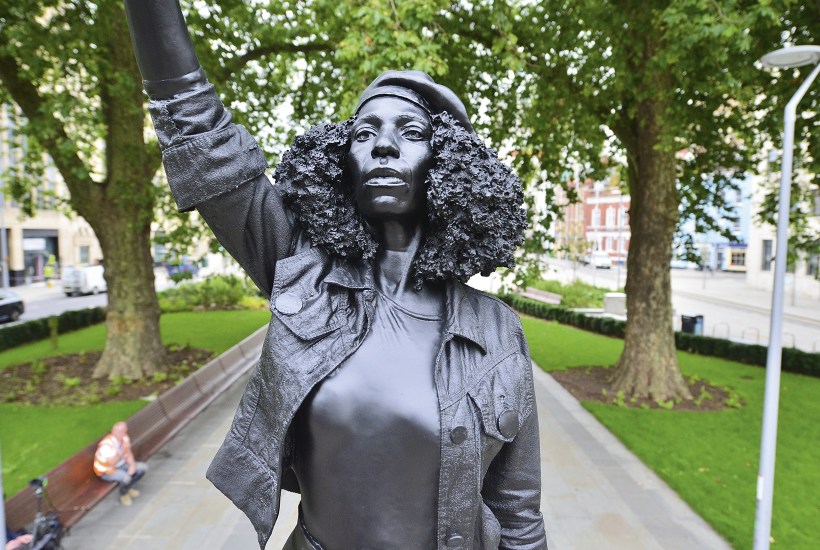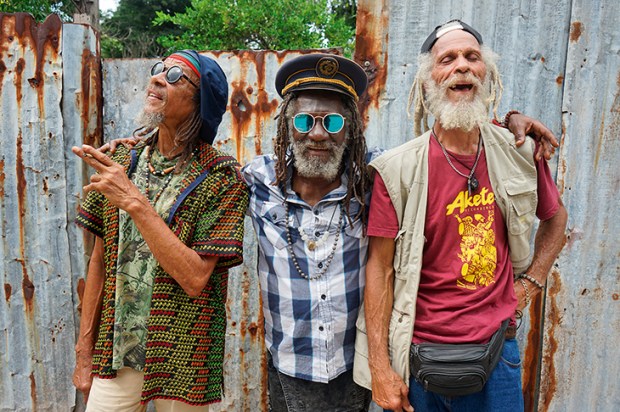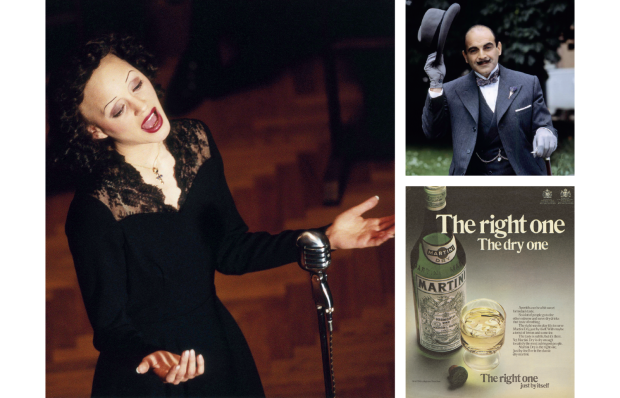How many black friends do you have? Do you have any? It’s likely that black people have more white friends than the reverse. In part that’s surely down to demographics and the size of the population. No matter your colour, you’re ten times more likely to bump into a white person than a black person, more or less, depending on where you find yourself, of course.
The situation is not so pronounced as in the United States where residential segregation has reinforced social apartheid. In the UK black and white people may live cheek-by-jowl, but that doesn’t necessarily indicate knowledge or even empathy.
Out of just over 100 households on our street in Brighton there are three black families; ours is one of them. It’s a pleasant avenue with polite residents, but I was pulled up sharp last month when passing a house just a few doors down. Displayed in the front window were hand-drawn posters with the words ‘Black Lives Matter’ and ‘Silence is Violence’. In more than a decade I’d rarely had a conversation with the adult children who now proclaimed their allegiance with folks with my phenotype; a month later we still haven’t spoken, and I am aware that I, too, bear a responsibility for that silence. Might it not simply be that we don’t have much in common?
Nonetheless, this seems a seminal moment in British culture. It’s as if the cards you might have spotted in landlords’ windows just 60 years ago warning ‘No Blacks, No Irish, No Dogs’ have been replaced by or morphed into posters signalling a spiritual unity with black bredren and sistren. But how far does it go? What are the limits of the engagement?
Some black Britons and African Americans are wary — vexed even — that their suffering risks becoming a fashion or an intellectual exercise, adopted by Johnny-come-latelys whose previous unconcern has undergone a transformation and who suddenly find a deep untapped well of empathy.
Without losing sight of the real racial bigots, the American comedian Ziwe Fumudoh has had fun recently interrogating the shallow depth of knowledge and engagement of earnest white activists. In her Instagram Live interviews Ziwe has gently skewered these youngsters who, having called out an older generation of white feminists for not having done enough, struggle to identify significant 20th-century black political figures such as Angela Davis and Marcus Garvey. In the titanic certainty of their allyship, they’re cousins to the young white British activists who walk around carrying copies of Why I’m No Longer Talking to White People About Raceas if it’s a Bible, and ownership of it signals their bona fides and that their work is done.
Can people of one race really understand the experience of another, a race their predecessors are accused of exploiting? In the post-imperial, multicultural world, for many it’s an emphatic ‘No’. In much of today’s cultural debate, our critics, artists and writers navigate a careful path to ensure they don’t speak on behalf of others from a different race, or seek to represent them without that group’s guidance.
The limits of empathy is an old conundrum but over the decades there have been a number of extraordinary figures whose lives have been marked by passing for black, masking their blackness or actively attempting to think black.
That phrase ‘think black’ first surfaced for me when I read Staying Power: The History of Black People in Britain. Arguably it’s one of the most comprehensive and important books charting the black experience in Britain. It has only one major flaw, as far as some black activists are concerned: its author Peter Fryer was white. Should his colour matter?
Fryer, who died in 2006, promised, in the preface to his book, to ‘make the effort to “think black” — to grasp imaginatively as well as intellectually the essence of the black historical experience’.
When the book was first published in 1984, Fryer was subjected to hateful abuse. The scholar Paul Gilroy recalls that it was ‘dished out by resentful, lazy and hostile community spokespeople who told him that he had no right to undertake the work because this particular history of suffering was their own special property’.
I have to admit, on an emotional level, part of me wished he had been black. But there is no singular black experience. And what Fryer possessed from his peel to his core was not just empathy; it was closer to the German expression Einfühlung, the act of ‘feeling into’ or ‘projecting oneself into another body or environment’. To interpret the past not only is it necessary to reach beyond what you know but also to make a great imaginative leap, no matter what your colour.
There’s now agreement that race is a social construct. Scientists will also tell you that genetically there is more difference within groups than between them, so that the DNA of a black Briton with Caribbean parents is likely to be closer to a Scot than to a Ugandan. Equally, blackness is an invention. Africans don’t consider themselves to be black. On the continent they are Yoruba, Akan, Dahomey; they only become black on arrival in Europe or North America.
For many the conundrum has been further complicated by the recent outing of several African-American activists who turned out to be white — revelations that consume the US news cycle. But their egregious deceptions are more likely indicative of mental ill health than anything more profound. After all there have been just a handful of cases of such white minstrels (including Rachel Dolezal and most recently Jessica Krug) exposed over the past few years in a population of more than 300 million. Arguably, though, their stories have illustrated the gulf that still exists between the races.
Blackness, for me, is a creed, a shared belief or sincere attachment to cultural signifiers, analogous to feminism. It’s not controversial to say that you can be a man and a feminist. But can you be white and black? Of course you can, but what matters is not physiology but soul; sincerity is the key word here.
Culture should not be locked off. In any event, it can’t be; it has to be porous, otherwise it withers and dies. With the ascent of Black Lives Matter, it’s understandable that black people see a chance for leverage. If you’ve suffered years of transgressions, you don’t want, at this moment when the spotlight seems to be turned on in a positive way, for someone to come along and mess with your brand, right? But who should be listened to? And does an authentic black voice exist?
In the jockeying for attention, there’s always the risk, of course, that the limelight and funds go to those who make the most noise, to the ‘shakedown artists’ as Tom Wolfe alerted us in Radical Chic & Mau-Mauing the Flak Catchers, and not necessarily to those who put forward the most compelling argument.
When I was growing up in the 1970s, black history was the afterthought at school that you never got to before the bell rang; now stacks of books addressing blackness adorn the shelves and displays at Waterstones. Today you’ll find myriad texts with the trigger words ‘race’, ‘black’, ‘privilege’ in the title.
When the scholar Peggy McIntosh popularised the term ‘white privilege’ in 1988, she drew up a list of privileges conferred on her by being part of the dominant caste in the US. They included: ‘If my day, week or year is going badly, I need not ask of each negative episode or situation whether it had racial overtones.’ It’s also a privilege to insert oneself into a debate that one has the resources to highlight or exploit.
But what happens in the absence of voices, in the silence of previous years and decades when black lives didn’t matter so much? Peter Fryer is what happens. Fryer is to be applauded for taking the time and energy to write about the complexity of black British life in an era when notable black intellectuals, such as the cultural theorist Stuart Hall, were focused more heavily on class.
Fryer was humbly invested in the story of black Britishness. When in the days after the toppling of the Colston statue, the artist Marc Quinn snuck into Bristol with a crane and TV crew in tow to erect ‘A Surge of Power’, he vexed people like me because it appeared an arrogant gesture, and his investment tenuous. Quinn inserted himself into a moment of controversy where he became a high-profile go-between. His intervention was akin to (but seemed not as sincere as) the self-effacing white abolitionists who in the 19th-century US acted as amanuenses for fledgling African Americans in recording their testimonies of escape from slavery. These abolitionists were necessary facilitators for slave narratives that might otherwise have remained unpublished. Prefaced by the abolitionists their rousing testimonies were ‘the black hand in a white glove’.
Centuries on from the first published accounts of black lives by black people, it’s reasonable and necessary to question and interrogate the line between amplifying the black voice and acting as a non-threatening proxy for it. Allies, such as Peter Fryer, are welcome but fairweather saviours should save their ardent displays of virtue for their bedroom mirror.
Got something to add? Join the discussion and comment below.
Get 10 issues for just $10
Subscribe to The Spectator Australia today for the next 10 magazine issues, plus full online access, for just $10.
Colin Grant’s five-part series, The Essay: Thinking Black, is on BBC Radio 3 from 5 October.
You might disagree with half of it, but you’ll enjoy reading all of it. Try your first month for free, then just $2 a week for the remainder of your first year.














Comments
Don't miss out
Join the conversation with other Spectator Australia readers. Subscribe to leave a comment.
SUBSCRIBEAlready a subscriber? Log in